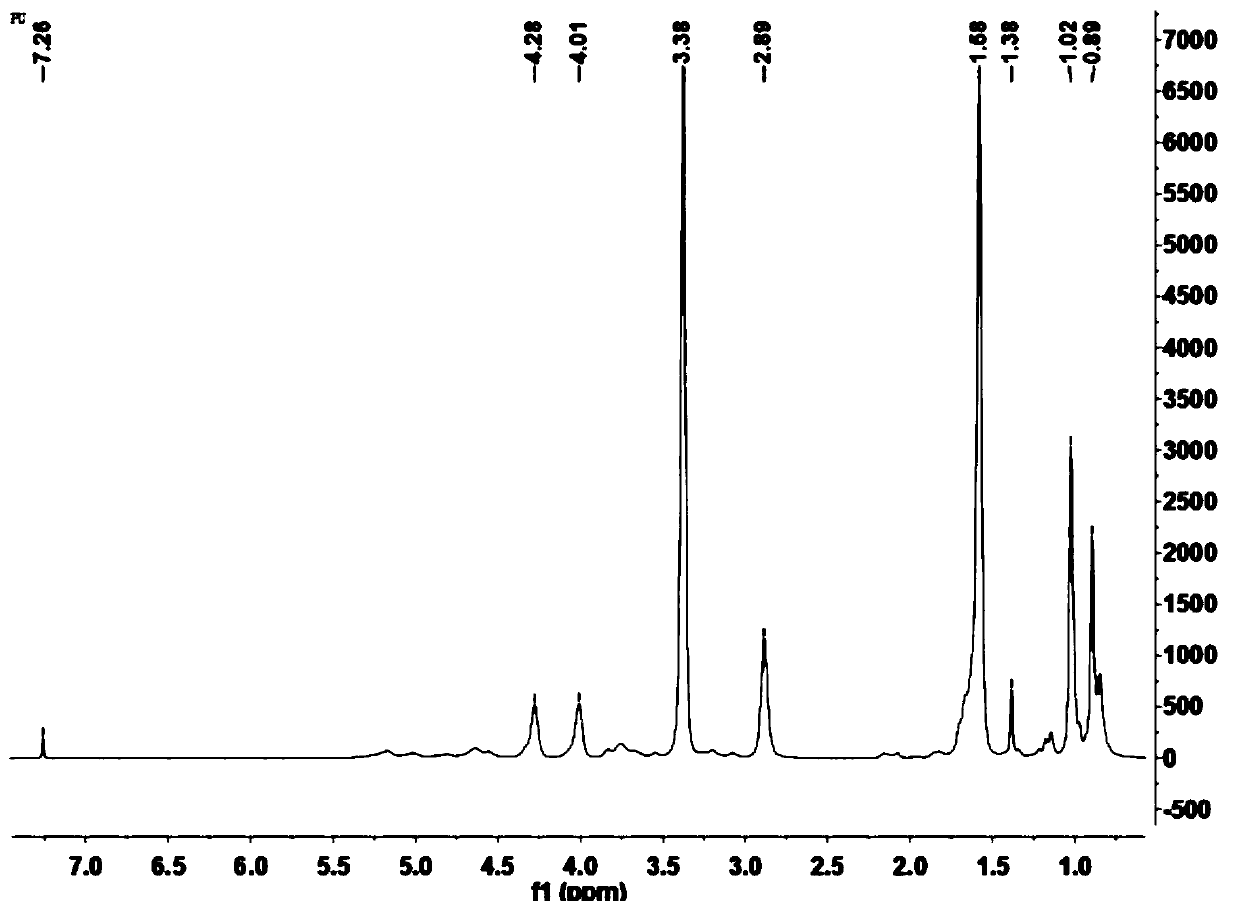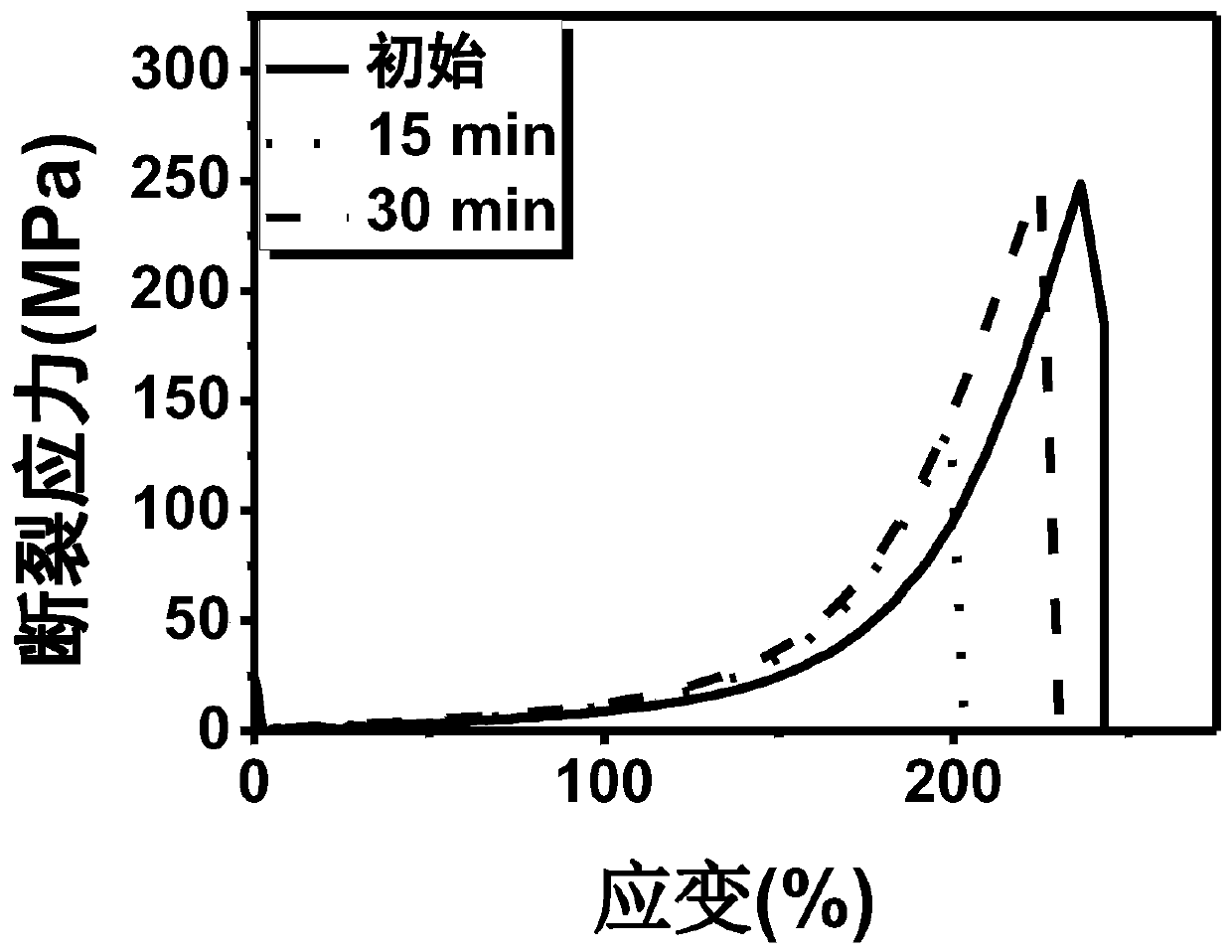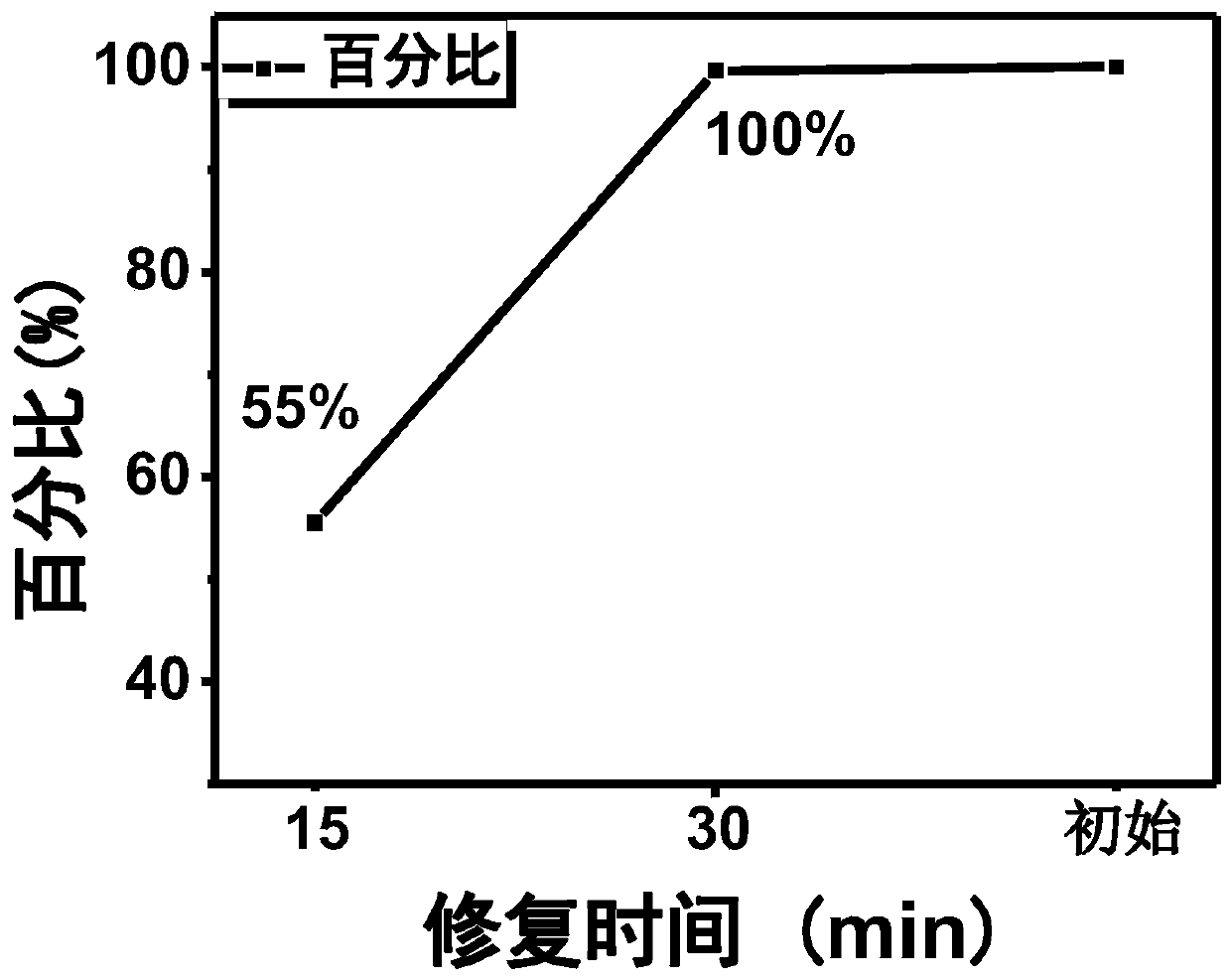Polyurethane self-repairing film, preparation method and self-repairing degree detection method
A self-healing, polyurethane technology, applied in the direction of measuring devices, strength characteristics, and the use of stable tension/pressure to test the strength of materials, etc., can solve the problems of unintuitive detection methods, and achieve the effect of simple and fast repair process
- Summary
- Abstract
- Description
- Claims
- Application Information
AI Technical Summary
Problems solved by technology
Method used
Image
Examples
Embodiment 1
[0027] Synthesis of Bisadamantane Substituted 1,2-Dioxetane (Terminal Double Bond) (Compound 5)
[0028]
[0029] Double adamantane substituted 1,2-dioxetane (terminal hydroxyl group) is abbreviated as: double adamantane substituted 1,2-dioxetane.
[0030] (1) Synthesis of Compound 1: Under the condition of ice-water bath, slowly drop 30g of phosphorus tribromide into a mixture of 17g of bromine and 75mL of n-heptane to prepare phosphorus pentabromide, then add 15g of 2-adamantanone , Stir and reflux for 3-5h until the solution is clear. The mixture was cooled to room temperature, poured into 100 mL of ice water, extracted with ethyl acetate to separate the organic phase, washed with saturated aqueous sodium bisulfite and water, dried with anhydrous magnesium sulfate and spin-dried, and recrystallized from ethanol to obtain a colorless Needle solid compound 1 (18.83 g, yield 64%).
[0031] (2) Synthesis of Compound 2: The reaction process was strictly anhydrous, and the r...
Embodiment 2
[0036] Synthesis of Benzothiadiazole Dithiophene (Energy Transfer Acceptor Molecule)
[0037]
[0038] A (2g, 6.8mmol), B (3.57g, 17mmol), NaHCO 3 (5.72g, 68mmol), tris(dibenzylideneacetone)dipalladium (0.31g, 0.34mmol), tris(o-methylphenyl)phosphine (0.41g, 1.36mmol) were added to tetrahydrofuran (80mL) and water ( 30mL) of the mixed solution, repeated degassing, in N 2 Under the atmosphere, the temperature was raised to 90°C for 72h. The reaction solution was cooled to room temperature, extracted with chloroform and saturated brine, the organic phase was collected, dried by adding anhydrous magnesium sulfate, and the solvent was spin-dried. After passing through a silica gel column, the crude product was recrystallized from a mixed solvent of dichloromethane and petroleum ether to obtain benzothiadiazole bithiophene (1.2 g, 60%) as an orange-red solid.
Embodiment 3
[0040] The preparation method of polyurethane self-repairing film is characterized in that comprising the steps:
[0041] (1) Under the protection of helium, dissolve isophorone diisocyanate (I) (0.793g, 3.57mmol) in 3mL of dry chloroform, add 5μL of dibutyltin dilaurate and 1 , 2-dioxetane (II) (30mg, 0.077mmol), reacted at 30°C for 1h to obtain a light yellow transparent liquid polyurethane prepolymer (III);
[0042] (2) Under the protection of helium, polytetrahydrofuran 650(IV) (1.005g, 1.55mmol) was dissolved in 4mL of chloroform, and light yellow transparent liquid polyurethane prepolymer (III) was added, and reacted at 65°C for 2h, Add 3mL of chloroform solution of 2-hydroxyethyl disulfide (V) (0.286g, 1.86mmol), and continue to react at 65°C for 3h to obtain a light yellow viscous solution, which is poured into n-hexane to settle, pumped The white blocky solid obtained after filtration is polyurethane elastomer (VI), which was vacuum-dried for 1-2 days. figure 1It is...
PUM
 Login to View More
Login to View More Abstract
Description
Claims
Application Information
 Login to View More
Login to View More - R&D
- Intellectual Property
- Life Sciences
- Materials
- Tech Scout
- Unparalleled Data Quality
- Higher Quality Content
- 60% Fewer Hallucinations
Browse by: Latest US Patents, China's latest patents, Technical Efficacy Thesaurus, Application Domain, Technology Topic, Popular Technical Reports.
© 2025 PatSnap. All rights reserved.Legal|Privacy policy|Modern Slavery Act Transparency Statement|Sitemap|About US| Contact US: help@patsnap.com



